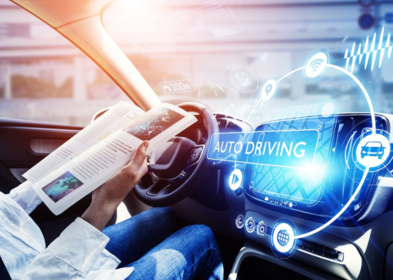
09/03/2023
Self-driving cars are not as green as we thought
Enrica Lazzarini
A warning comes from research carried out by the MIT in Boston: the energy needed to operate a global fleet of self-driving cars could generate the same amount of greenhouse gas emissions as all the data centres in the world combined
If the entire global fleet of cars comes to be self-driving type, the computers that power them will generate the same amount of greenhouse gas emissions as all the data centres in the world combined.
This is due to the increasing computing power required by self-driving cars, with a consequent increase in the energy requirements of on-board systems used to manage sophisticated algorithms, sensors and integrated cameras for navigating safely through traffic.
To study the impact of this growth, researchers at the MIT, Massachusetts Institute of Technology in Boston, have built a statistical model to determine the emissions that would be generated by the computers on board a fleet of fully electric and self-driving vehicles, if driverless cars start to be used globally. The research, which was published at the end of January, is based on a statistical model which calculated the energy that a fleet of 1 billion self-driving electric vehicles will consume if each vehicle is to be driven for just one hour a day (with a computer consuming about 840 watts). This would be equivalent to approximately the same amount of energy used today by Argentina or 0.3% of global greenhouse gas emissions.
Although these are only estimates, researchers at the MIT aim to raise awareness in the automotive industry to the fact that IT efficiency, and not only energy efficiency, should also be a priority.
To avoid these very high emissions, each vehicle should use less than 1.2 kW of power for computing. This means that hardware efficiency would need to double every year until 2050, a rate that is considered too high and unsustainable, compared to that of today. Even if it were possible, it would not be feasible, given that the lifespan of vehicles is at least 10 years, making any future hardware upgrade would be extremely inefficient. The dilemma is whether to make the algorithms more efficient so that they require less computing power in exchange for accuracy, which could potentially affect vehicle safety.
In a market whose value, according to statistics, will reach 76 billion dollars by 2027, knowing today what the problems will be in 20 years’ time, will help us to design more efficient self-driving vehicles from the very start.
This is due to the increasing computing power required by self-driving cars, with a consequent increase in the energy requirements of on-board systems used to manage sophisticated algorithms, sensors and integrated cameras for navigating safely through traffic.
To study the impact of this growth, researchers at the MIT, Massachusetts Institute of Technology in Boston, have built a statistical model to determine the emissions that would be generated by the computers on board a fleet of fully electric and self-driving vehicles, if driverless cars start to be used globally. The research, which was published at the end of January, is based on a statistical model which calculated the energy that a fleet of 1 billion self-driving electric vehicles will consume if each vehicle is to be driven for just one hour a day (with a computer consuming about 840 watts). This would be equivalent to approximately the same amount of energy used today by Argentina or 0.3% of global greenhouse gas emissions.
Although these are only estimates, researchers at the MIT aim to raise awareness in the automotive industry to the fact that IT efficiency, and not only energy efficiency, should also be a priority.
To avoid these very high emissions, each vehicle should use less than 1.2 kW of power for computing. This means that hardware efficiency would need to double every year until 2050, a rate that is considered too high and unsustainable, compared to that of today. Even if it were possible, it would not be feasible, given that the lifespan of vehicles is at least 10 years, making any future hardware upgrade would be extremely inefficient. The dilemma is whether to make the algorithms more efficient so that they require less computing power in exchange for accuracy, which could potentially affect vehicle safety.
In a market whose value, according to statistics, will reach 76 billion dollars by 2027, knowing today what the problems will be in 20 years’ time, will help us to design more efficient self-driving vehicles from the very start.








